You manage more data than ever before. Enterprise data governance gives you a system of policies, processes, roles, and technologies to control, secure, and improve your data. Most organizations see the value—92% of enterprises have adopted data governance programs globally.
- 92% of enterprises have implemented data governance programs globally.
| Reason | Description |
|---|---|
| Ensuring security and privacy of sensitive data | Protecting data from breaches and unauthorized access, complying with regulations like GDPR or HIPAA. |
| Maintaining high-quality data | Improving data quality and preventing errors for better decisions. |
| Meeting regulatory and compliance requirements | Following industry rules and reporting obligations. |
| Managing data throughout its lifecycle | Keeping data relevant and useful from creation to disposal. |
You benefit from enterprise data governance by making smarter decisions, staying compliant, and reducing risks.
Defining Enterprise Data Governance

What is Enterprise Data Governance?
You face a world filled with data. Every day, your organization creates, stores, and uses information from many sources. Enterprise data governance gives you a way to manage this data with confidence. Leading industry analysts describe enterprise data governance as the backbone of successful data management. It helps you keep data accurate, secure, and compliant with regulations. Without it, your data can become chaotic and unreliable.
Enterprise data governance is a comprehensive framework. It includes policies, procedures, and standards that help you manage and protect data assets across your organization.
You use enterprise data governance to set rules for how data is handled. You create standards for quality, security, and privacy. You make sure everyone follows the same guidelines. This system supports better decision-making and improves operational efficiency.
Here is a quick overview:
| Aspect | Description |
|---|---|
| Definition | A framework with policies, procedures, and standards to manage and protect data assets. |
| Importance | Ensures data quality, security, privacy, and compliance. Supports better decisions and efficiency. |
When you build a strong data governance program, you establish trust in your data. You know your information is reliable and safe. You also meet legal requirements and avoid costly mistakes.
You can break down the main goals of data governance into several key points:
- Establish policies, procedures, and standards for data management.
- Ensure data accuracy, security, and compliance.
- Support organizational goals for data quality and user trust.
How Enterprise Data Governance Works
You need a clear structure to make enterprise data governance work. You start by defining policies and standards for how data is used and handled. You assign roles and responsibilities so everyone knows who owns and manages each part of your data.
Your organization sets up measures to keep data accurate and reliable. You use security protocols to protect sensitive information. You make sure your data practices follow all laws and regulations.
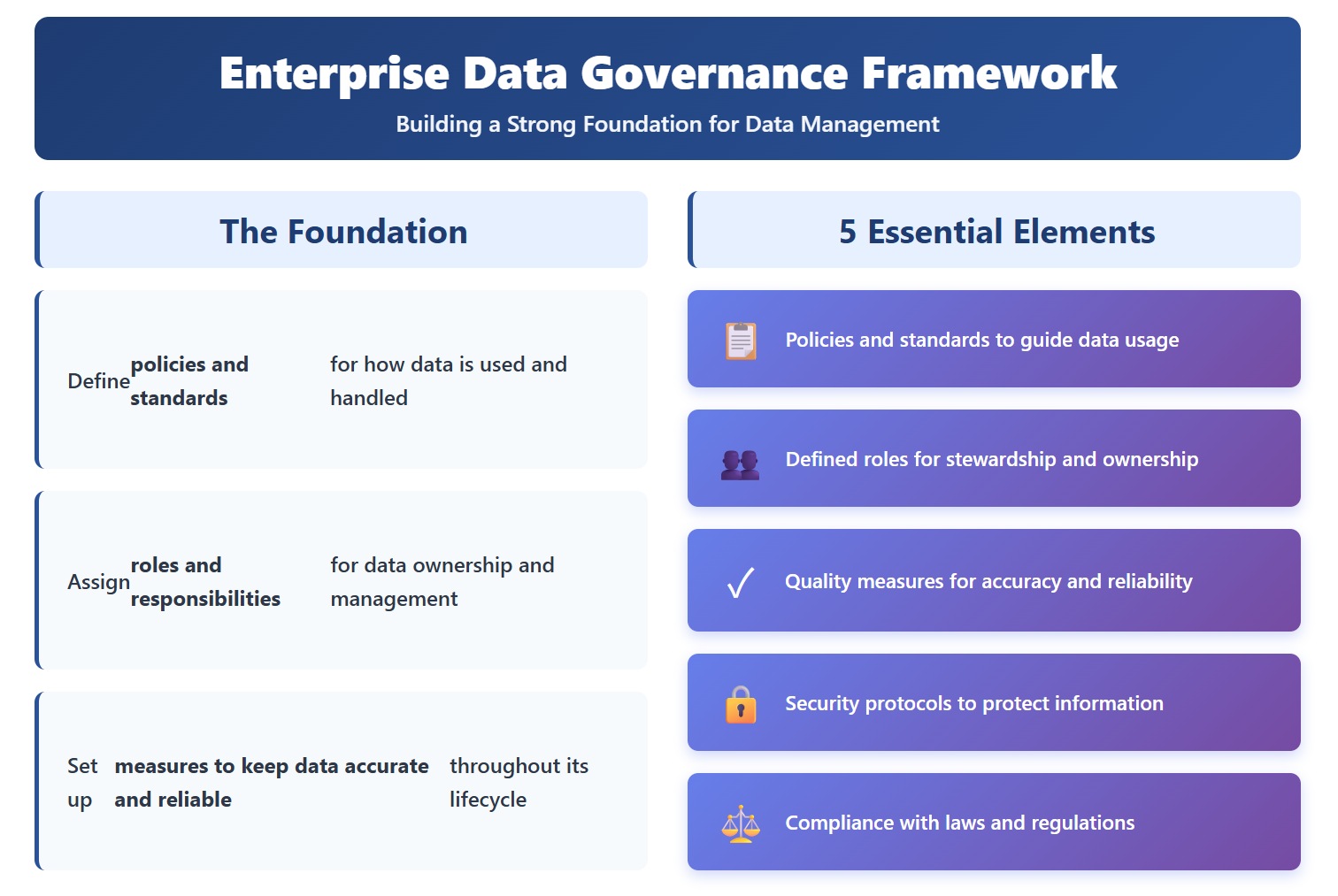
Here are the essential elements you should include:
- Policies and standards to guide data usage and handling.
- Defined roles and responsibilities for data stewardship and ownership.
- Data quality measures to ensure accuracy and reliability.
- Data security protocols to protect sensitive information.
- Compliance with relevant laws and regulations.
You also organize your data so it is easy to find and use. You decide who can access different types of data. You set rules for how data can be used to protect privacy and reduce risks. You classify data based on sensitivity and set standards for integrity.
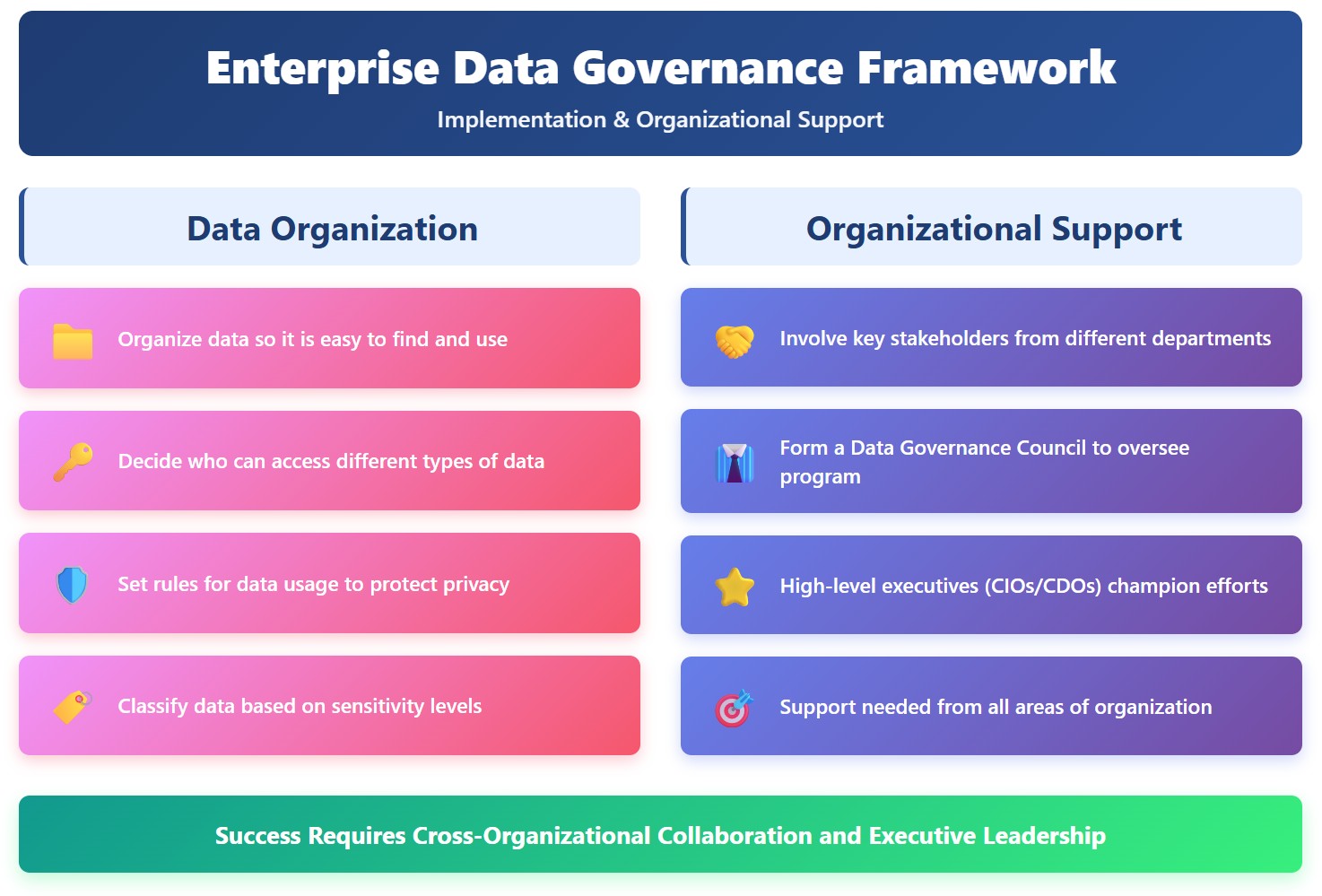
Your data governance program needs support from all areas of your organization. You involve key stakeholders from different departments. You form a Data Governance Council to oversee the program. High-level executives, such as CIOs or CDOs, often champion these efforts.
Tip: When you align your data governance objectives with your strategic goals, you create a program that supports your business and keeps your data safe.
You use processes and technology to manage your data. You set up rules for data quality, security, storage, and access. You rely on tools like ETL platforms, data modeling software, and BI solutions to keep everything running smoothly.
| Element | Description |
|---|---|
| Policies and processes | Rules for handling data and methods for managing data. |
| Roles | Individuals responsible for different aspects of data management. |
| Data stewardship | Ensuring data quality and proper use. |
| Technology | Tools that assist in managing and protecting data. |
Your data governance working groups define data and improve specific domains. You integrate technologies to ensure consistent management across your organization.
You focus on five main objectives:
- Standardize data to ensure consistency.
- Integrate data to prevent silos.
- Protect data from breaches and unauthorized access.
- Store data securely and keep it accessible.
- Harmonize data use with your goals and regulations.
When you follow these steps, you create a strong enterprise data governance program. You organize your data, keep it safe, and use it to drive your business forward.
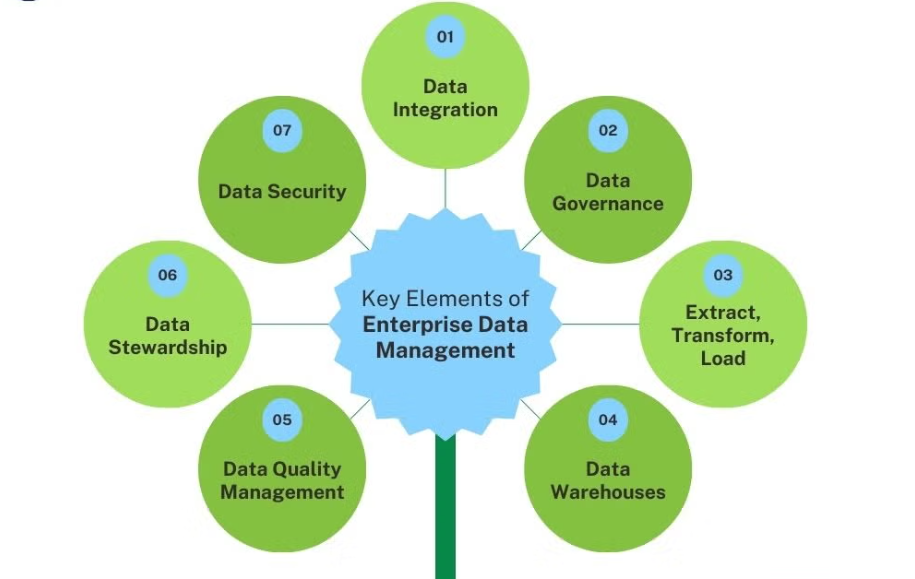
Why Enterprise Data Governance Matters
Key Benefits for Organizations
You want your organization to succeed in a world driven by information. Data governance helps you reach that goal. When you manage your data well, you unlock many advantages that support growth, compliance, and trust.
You improve the quality of your data. Standardized processes and metadata management make your information more accurate and useful. You build a foundation for ethical data practices. This creates a trustworthy environment and helps you follow regulations.
You communicate better across teams. Repeatable processes and clear accountability reduce bias and inconsistency. Your organization becomes more efficient. Teams use data in their work with fewer errors and delays.
You make smarter decisions. Data governance empowers you to use analytics and artificial intelligence with confidence. You respond quickly to changing business needs. Flexible business intelligence lets you turn complex data into actionable insights.
Here is a table that shows the main benefits organizations report after implementing data governance:
| Benefit | Description |
|---|---|
| Improved Data Quality | Enhances the accuracy and fitness of information for business use through standardized metadata management. |
| Enhanced Data Ethics | Establishes a trustworthy business climate and compliance with regulations, crucial for risk management and trust. |
| Better Communication | Creates repeatable processes with accountability, reducing bias and inconsistency in data handling. |
| Data-Driven Decision-Making | Empowers organizations to leverage data effectively, leading to trusted analytics and AI capabilities. |
| Operational Efficiency | Drives efficiencies that impact data activities and how teams leverage data in their work. |
| Flexibility in Business Intelligence | Enables quick responses to changing needs, allowing users to convert multi-structured data into actionable insights. |
You also strengthen your ability to meet regulatory requirements. Data governance provides the structure you need to comply with laws and industry standards. You classify data, set policies, and control access. You keep records and audit trails for verification. You identify risks and respond to incidents quickly.
| Aspect | Contribution to Compliance |
|---|---|
| Foundational Infrastructure | Provides the framework for compliance controls and data classification. |
| Policy Implementation | Translates regulations into internal policies and procedures. |
| Access Control and Security | Implements controls and maintains audit trails for data access. |
| Documentation and Evidence | Maintains records and audit trails for compliance verification. |
| Risk Management | Identifies compliance risks and supports incident response. |
Tip: When you invest in data governance, you protect your organization from costly mistakes and build a reputation for reliability.
Risks of Neglecting Data Governance
If you ignore data governance, you expose your organization to serious risks. You may face regulatory penalties. For example, Meta received a €1.2 billion fine for violating GDPR rules. Weak data governance can disrupt your operations. Inaccurate reporting and delayed decisions slow down your business.
You increase the chance of security breaches. Poor protection measures put your financial and reputational health at risk. Customers lose trust if they feel their data is not safe.
Here are some of the most significant risks you face when you neglect data governance:
- Regulatory penalties due to non-compliance with data regulations, such as large fines.
- Operational disruptions from weak data governance, leading to inaccurate reporting and slow decision-making.
- Security breaches that result from inadequate data protection, increasing financial and reputational risks.
You also encounter other problems:
- Poor data governance leads to low-quality data, which causes misguided decisions.
- Operational inefficiencies and confusion grow within your organization.
- Customer trust suffers when clients believe their data is not handled responsibly.
Financial and reputational consequences can be severe. Recent case studies show the impact:
| Organization | Financial Consequence | Reputational Consequence |
|---|---|---|
| Theranos | Destroyed nearly $9 billion in value | Endangered countless patients |
| Wells Fargo | Paid $3 billion in settlements | Customer loyalty score dropped by 24% |
| Cambridge Analytica | Paid a $5 billion fine | Raised questions about democratic integrity |
Note: You protect your business and reputation when you prioritize data governance.
You see that enterprise data governance is not just a technical requirement. It is a strategic necessity. You gain measurable benefits and avoid costly risks when you make data governance a priority.
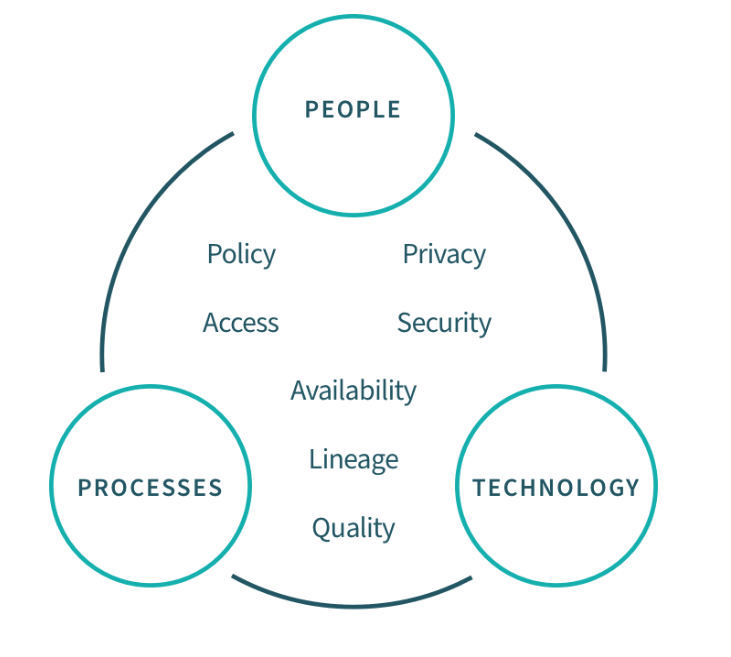
Core Components of a Enterprise Data Governance Framework
Data Quality Management
You need high-quality data to make smart decisions. Data governance helps you set standards for accuracy, consistency, and completeness. You use a data governance framework to guide your efforts and measure results. Industry standards like TDQM, DAMA DMBOK, ISO 8000, Six Sigma, and COBIT/ITIL provide clear guidelines for managing data quality.
| Framework/Standard | Description |
|---|---|
| TDQM | Integrates data quality into organizational processes and involves all stakeholders. |
| DAMA DMBOK | Defines key concepts and guidelines for data quality initiatives. |
| ISO 8000 | Offers international standards for accuracy, completeness, and integrity. |
| Six Sigma | Uses statistical tools to minimize defects in data processes. |
| COBIT/ITIL | Emphasizes data quality in overall data management practices. |
You assess data quality using specific metrics. These include accuracy, consistency, timeliness, completeness, and integrity. You also track data transformation error rates and amounts of dark data. Email bounce rates and usability help you understand how well your data supports business needs.
| Metric Type | Description |
|---|---|
| Accuracy | Measures how much of the data carries original values. |
| Consistency | Assesses how much data is consistent across systems. |
| Timeliness | Measures the availability of up-to-date data. |
| Completeness | Evaluates the percentage of fields with available data. |
| Integrity | Measures the accuracy and consistency of data over its lifecycle. |
| Usability | Measures how easily data can be accessed and used by stakeholders. |
Tip: You improve data quality by following recognized standards and tracking key metrics.
Data Stewardship and Ownership
You assign clear roles to manage your data. A strong data governance framework brings together policies and standards. Data owners define rules and oversee compliance. Data stewards handle daily tasks and validate data. Both roles work together to keep your data accurate and secure.
- Legal Data Ownership often belongs to a C-Level executive or the company.
- Internal Data Ownership is usually assigned to a data steward who works with the data every day.
- Data owners oversee compliance and data management.
- Data stewards focus on implementing policies and monitoring technical controls.
- Data Stewards coordinate and implement data policies.
- Data Owners define high-level policies and maintain strategic oversight.
- Both roles ensure data accuracy, quality, and security.
| Best Practice | Description |
|---|---|
| Be accountable | Data stewards must manage data according to regulations and laws like GDPR and CCPA. |
| Establish executive support | Senior executives should support data stewards to strengthen their authority. |
| Make data policies transparent | Data policies should be clear and accessible to everyone. |
| Maintain complete documentation | All decisions must be documented and available to stakeholders. |
Note: You build trust in your data by making stewardship and ownership transparent and accountable.
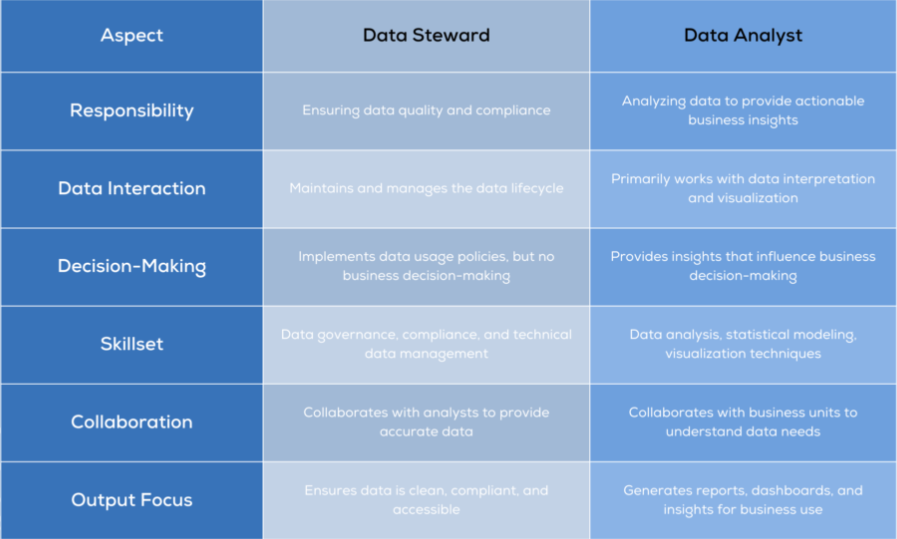
Data Protection and Security
You protect your data from threats and unauthorized access. Data governance sets rules for handling, storing, and accessing information. You use encryption, access management software, and secure storage solutions to keep data safe.
| Measure | Description |
|---|---|
| Encryption | Converts data into a secure format readable only with a key. |
| Access Management Software | Controls who can access data and what actions they can perform. |
| Secure Data Storage Solutions | Protects data from unauthorized access and breaches. |
- A well-designed data governance strategy defines steps and regulations for compliance and security.
- Data governance tools help you secure data throughout its lifecycle.
- You ensure employees access only the data needed for their jobs.
- You reduce risks of unauthorized access and insider threats.
Data security policies create a common understanding across your organization about how to handle and protect data resources.
You also address compliance with privacy regulations like GDPR and CCPA. You set clear data handling policies, limit data collection, and train staff on privacy obligations. You enforce strong security measures and define roles to ensure accountability.
Data Lifecycle Management
You manage data from the moment you create it until you securely dispose of it. A strong data governance framework helps you control every stage of the data lifecycle. You start by discussing your needs and developing a plan. You discover and catalog your data so you know what you have. You set clear data governance policies that guide how you handle information. You deploy these policies and put them into action. You monitor your data and optimize your processes to keep everything running smoothly.
- Discussion and development
- Data discovery and cataloging
- Data governance policy setting
- Deployment and implementation
- Continuous monitoring and optimization
You must secure your data at every stage. You use encryption and secure storage to protect information. You control who can access data and make sure only authorized users see sensitive details. When data is no longer needed, you dispose of it safely. Data governance gives you guidelines for retention and disposal. You identify and classify the types of data you collect. You check legal and regulatory requirements. You set retention periods for each type of data. You define secure disposal methods and enforce your policies.
- Data governance establishes guidelines for data retention and disposal.
- You ensure personal data is not kept longer than necessary.
- You securely dispose of data when it is no longer needed.
You review your policies regularly and update them as needed. This approach keeps your organization compliant and protects your reputation.
Roles and Responsibilities
You need clear roles to make your data governance program work. Each person has specific duties that help you manage and protect your data. The data administrator orchestrates the program and keeps everything organized. The data steward curates business information and ensures quality. The data custodian acts as a technical guardian, maintaining security and integrity. Data users consume insights and use data for decision-making. The data product manager owns data products and drives innovation. The Chief Data & Analytics Officer sponsors the strategy and supports your goals.
| Role | Responsibility |
|---|---|
| Data Administrator | Program orchestration |
| Data Steward | Business curation |
| Data Custodian | Technical guardianship |
| Data User | Insight consumption |
| Data Product Manager | Data-product ownership |
| Chief Data & Analytics Officer (CDAO) | Strategic sponsorship |
You assign these roles based on your organization’s needs. You make sure everyone understands their responsibilities. You encourage collaboration between business and technical teams. This structure supports your data governance framework and helps you achieve your objectives.
Tip: When you define roles and responsibilities, you build accountability and trust in your data governance program.
When and Why Organizations Need Enterprise Data Governance
Common Triggers and Use Cases
You often encounter situations that make data governance essential. Business growth can lead to more data sources and complex systems. You need a way to manage this expansion and keep your data reliable. Regulatory changes also drive the need for strong data governance. Laws like GDPR and HIPAA require you to protect sensitive information and maintain compliance.
Here is a table that highlights common triggers:
| Evidence Type | Description |
|---|---|
| Regulatory Compliance | You must comply with laws like GDPR and HIPAA, which prompt the need for data governance. |
| Data Quality and Integrity | High-quality data is essential for actionable insights, making robust governance necessary. |
You use data governance when you want to improve decision-making. Many companies now rely on data to guide their strategies. According to a McKinsey study, data-driven organizations are 23 times more likely to acquire customers. You also need governance when you face risks from poor data quality. Experian’s report shows that poor data quality can cost organizations an average of $15 million each year.
Tip: You can avoid costly mistakes and improve business outcomes by prioritizing data governance during periods of growth or regulatory change.
Real-World Examples
You can learn from organizations that have successfully implemented data governance. In the finance sector, a top global bank classified its data and set up role-based access controls. This approach helped the bank audit data usage and improve security. In healthcare, a leading hospital network enforced HIPAA compliance through governance policies and advanced encryption. Stakeholders from clinical, IT, and administrative teams worked together to update policies and protect patient data.
You can follow these steps to strengthen your own data governance program:
- Start with detailed data classification.
- Implement role-based access controls.
- Regularly audit data access and usage.
- Establish governance policies for compliance.
- Use advanced encryption and anomaly detection.
- Engage stakeholders from all relevant domains.
- Develop a public data strategy and create feedback loops.
Note: You build trust and efficiency when you apply proven data governance strategies from successful organizations.
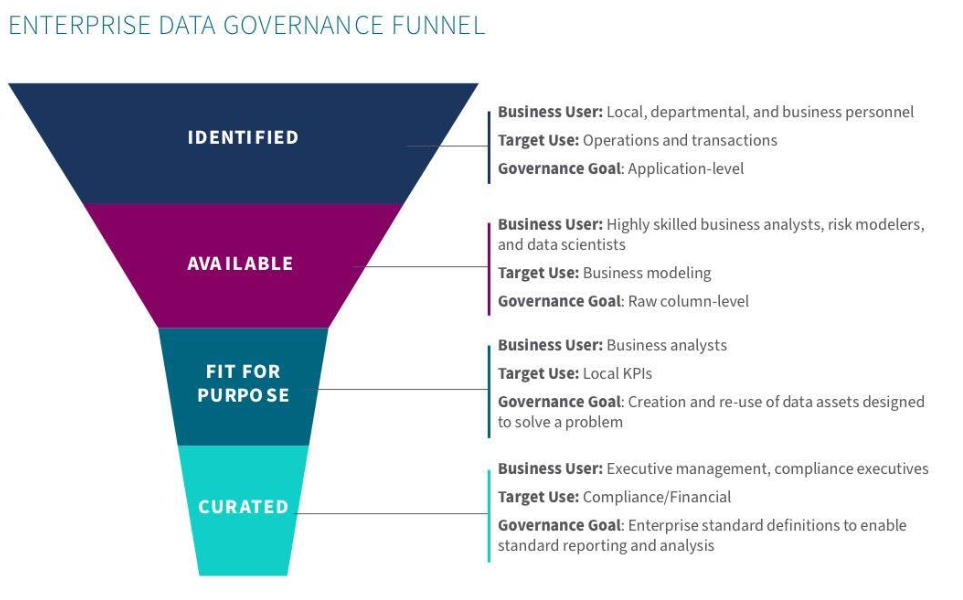
Implementing an Effective Enterprise Data Governance Framework
Popular Frameworks and Methodologies
You have many choices when selecting a data governance framework for your organization. Each framework offers unique strengths and focuses on different aspects of enterprise data governance. You can use these frameworks to guide your data governance program and improve your data governance processes.
| Framework Name | Description |
|---|---|
| Data Management Body of Knowledge (DMBOK) | A comprehensive framework covering various aspects of Data Governance, managed by DAMA. |
| Control Objectives for Information and Related Technology (COBIT) | A globally recognized framework for IT governance that includes principles for effective Data Governance. |
| Data Governance Institute (DGI) Framework | Defines Data Governance with a focus on enhancing decision-making and minimizing costs. |
| PwC Enterprise Data Governance Framework | Comprises five key components essential for effective Data Governance. |
| Eckerson Data Governance Framework | Consists of six layers and 36 components, addressing people, processes, technology, and culture. |
You should consider the differences between frameworks. DAMA-DMBOK focuses on comprehensive data management and works best for organizations seeking detailed insights into data domains. COBIT aligns IT with business goals and suits organizations managing IT governance and compliance.
| Framework | Focus Area | Best Use Case |
|---|---|---|
| DAMA-DMBOK | Comprehensive data management | Organizations seeking detailed insights into data domains |
| COBIT | Aligning IT with business goals | Organizations managing IT governance and compliance |
Best Practices for Data Governance
You can strengthen your data governance program by following proven data governance best practices. Start by defining your strategy and understanding your current data landscape. Set up a governance structure and select the right data governance tools. Begin with small projects and scale as you gain experience. Monitor your progress and make improvements.
- Define your data governance strategy first.
- Audit your current data landscape.
- Set up your governance structure.
- Select the right data governance software.
- Start small and scale.
- Monitor, measure, and improve.
You will see benefits such as reduced time-to-market for new products, increased revenue from accurate customer segmentation, and decreased regulatory risks. You should also activate your metadata, automate lineage, and build a collaborative business glossary. Treat governance as a product and future-proof for AI and analytics.
Leveraging FineDataLink for Enterprise Data Governance
You can enhance your enterprise data governance program by using FineDataLink. This platform supports real-time data synchronization and fast integration across multiple sources. You benefit from a low-code, process-oriented interface that makes data governance practices easier to implement. FineDataLink offers multi-source data collection, intelligent operation, and high extensibility with built-in Spark SQL. You also gain strong security features, including data encryption and SQL injection prevention.
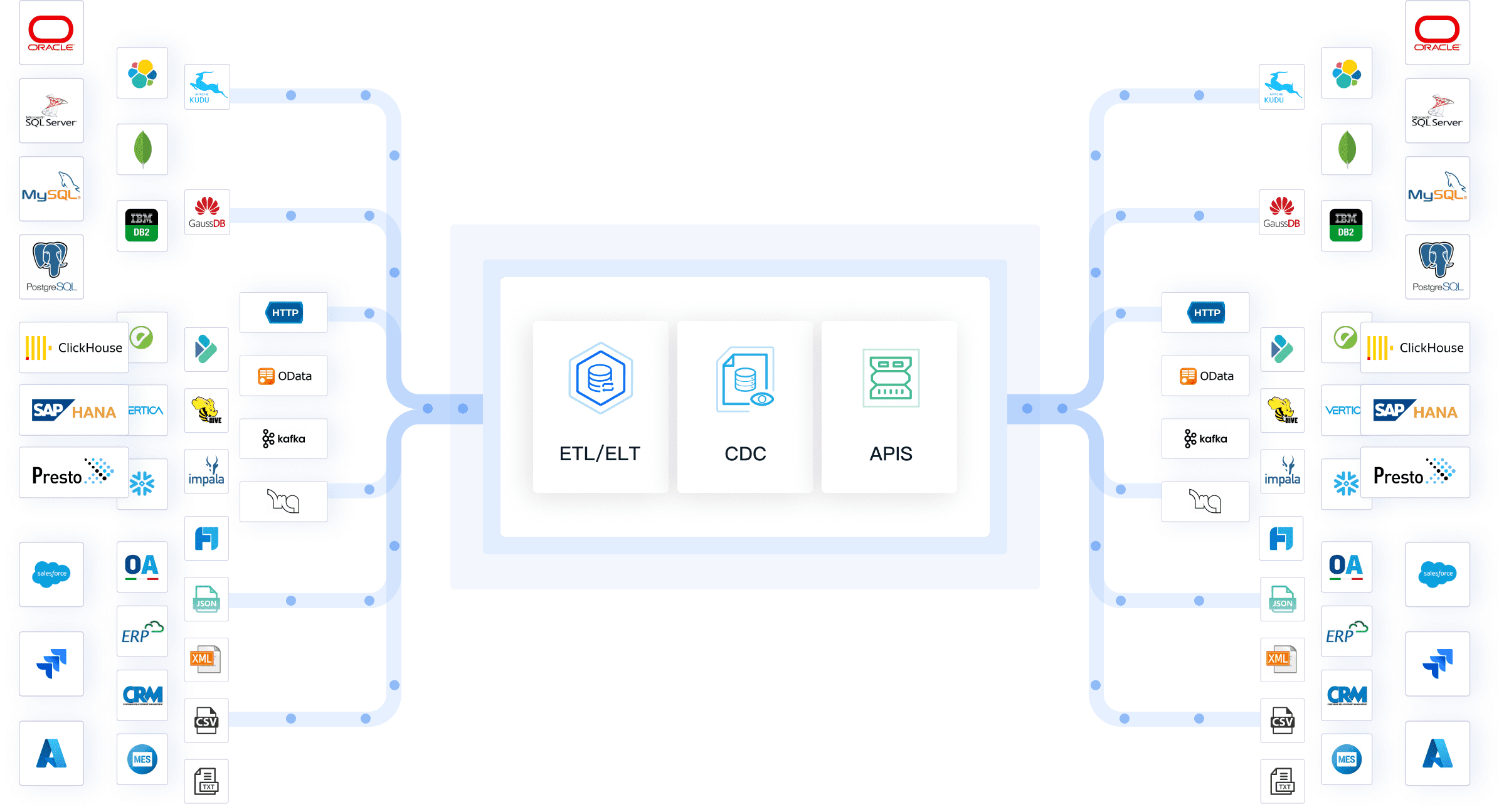
| Feature | FineDataLink |
|---|---|
| Real-time data synchronization | Non-intrusive real-time synchronization |
| Data integration | Fast connection and high-efficiency integration |
| User-friendliness | Process-oriented low-code platform |
| Data source support | Multi-source data collection |
| Intelligent operation and maintenance | Efficient intelligent operation and maintenance |
| Extensibility | High extensibility with built-in Spark SQL |
| Security | Data encryption and SQL injection prevention |
You can use FineDataLink to build a robust data governance framework, streamline your data governance processes, and support your data governance program with advanced technology.
Overcoming Challenges in Enterprise Data Governance

Common Obstacles
You may face several obstacles when you try to implement data governance in your organization. These challenges can slow down your progress and make it harder to achieve your goals. Here are some of the most common issues:
- Fragmented data systems can make it difficult to get a complete view of your information.
- Unclear ownership often leads to confusion about who is responsible for data.
- Regulatory complexities add extra layers of rules you must follow.
- Resistance to organizational change can slow down new initiatives.
- Inconsistent data standards create confusion and errors.
- Siloed data environments keep information locked in separate departments.
- Difficulties in ensuring regulatory compliance can put your organization at risk.
- Ensuring accuracy, completeness, and consistency of data remains a constant challenge.
- Cultural misalignment may cause teams to work against each other instead of together.
Tip: Recognizing these obstacles early helps you plan better and avoid common pitfalls in your data governance journey.
Solutions and Strategies
You can overcome these challenges by using proven strategies and tools. Start by establishing clear data stewardship roles. Assigning responsibility ensures that someone always oversees your data governance initiatives. Develop standardized policies to create consistency and help everyone follow the same rules.
Automation can make a big difference. Use data governance automation to enforce policies and streamline your workflows. Real-time monitoring lets you detect and fix issues before they become bigger problems. Regular security audits, encryption, and access controls protect your sensitive data and help you meet regulations like GDPR and HIPAA.
Here is a table with effective strategies:
| Strategy | Description |
|---|---|
| Robust Data Governance Framework | Use AI and machine learning to automate data quality and compliance checks. |
| Master Data Management | Integrate solutions for a single source of truth and reduce errors. |
| Data Quality Management | Set standards and use AI-driven tools for data cleansing. |
| Data Security Measures | Apply encryption and access controls to protect information. |
You build a strong data governance program by combining these strategies. This approach helps you manage risks, improve data quality, and support your business goals.
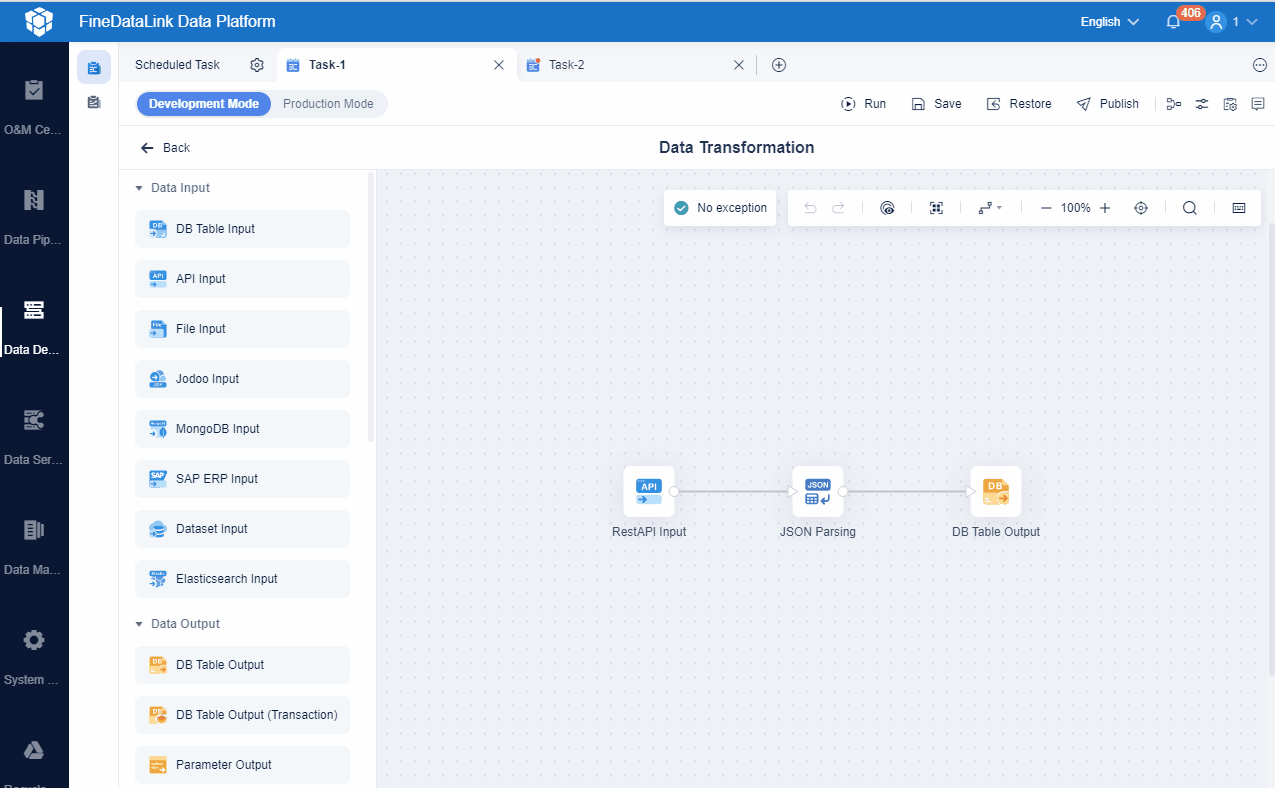
You maximize the value and security of your data when you invest in enterprise data governance. This approach helps you manage metadata, set clear policies, and measure data quality. You see improved operational efficiency, increased revenue, and reduced risks. Solutions like FineDataLink streamline your efforts and build trust in your information products. When you take action now, you lay the foundation for future business success.
- Improved operational efficiency
- Increased revenue
- Reduced risks
- Lower costs
- Greater acceptance of information management projects
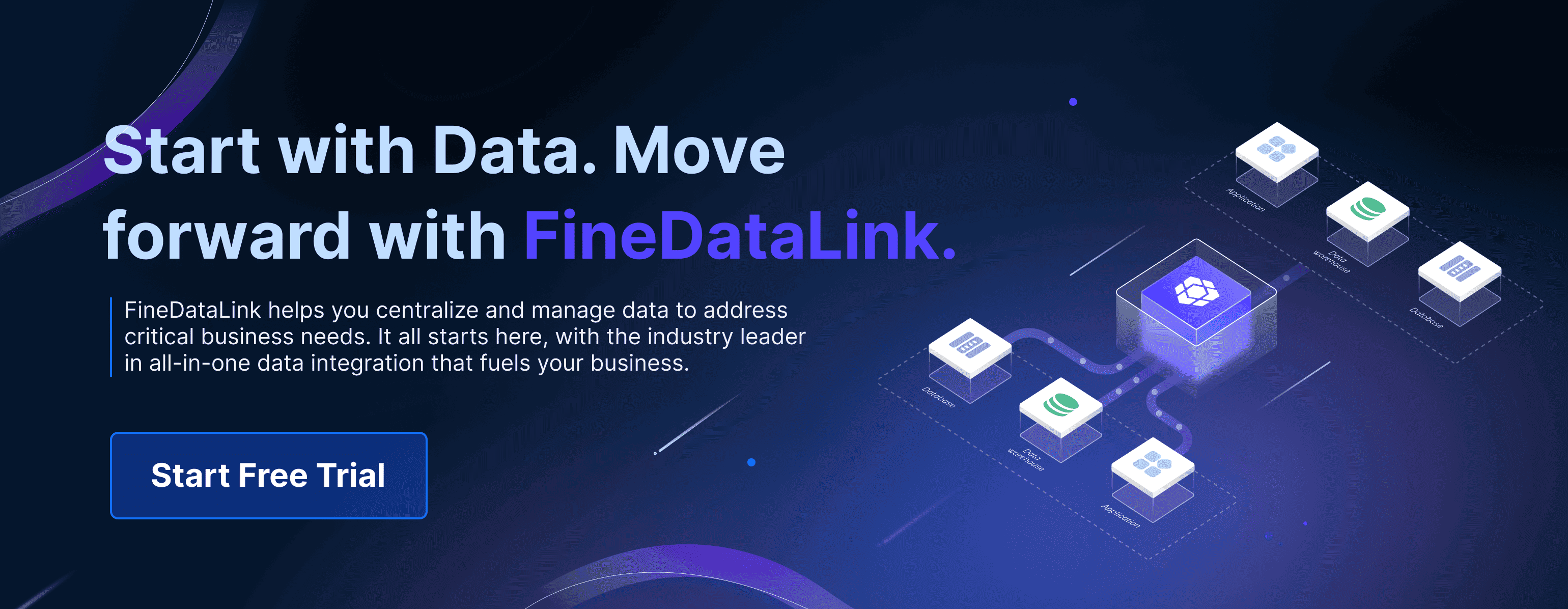
Continue Reading About Enterprise Data Governance
Enterprise Data Integration: A Comprehensive Guide
What is enterprise data and why does it matter for organizations
Understanding Enterprise Data Centers in 2025
Enterprise Data Analytics Explained for Modern Businesses
FAQ

The Author
Howard
Data Management Engineer & Data Research Expert at FanRuan
Related Articles
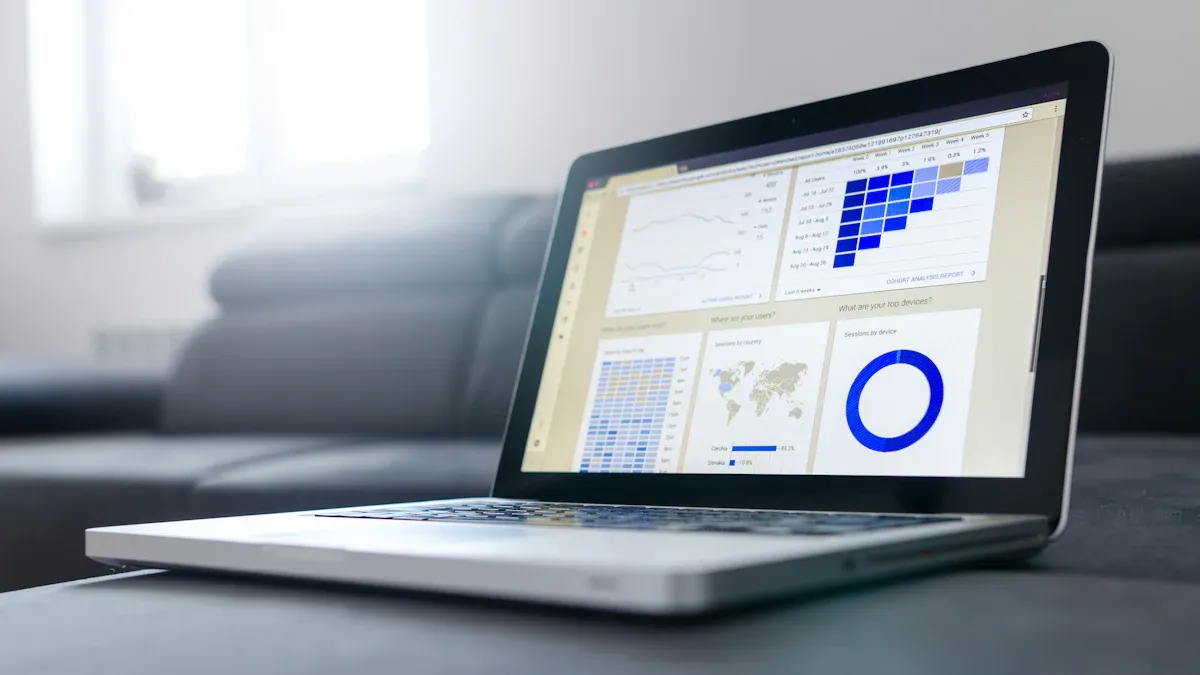
12 Best Data Observability Tools to Watch in 2025
Top 12 best data observability tools for 2025 with key features to boost data quality, reliability, and integration for modern data-driven teams.
Howard
Nov 28, 2025

Top 10 Data Quality Monitoring Tools You Should Know in 2025
Compare the top 10 data quality monitoring tools for 2025 to find solutions with advanced features, real-time monitoring, and seamless integration.
Howard
Nov 27, 2025
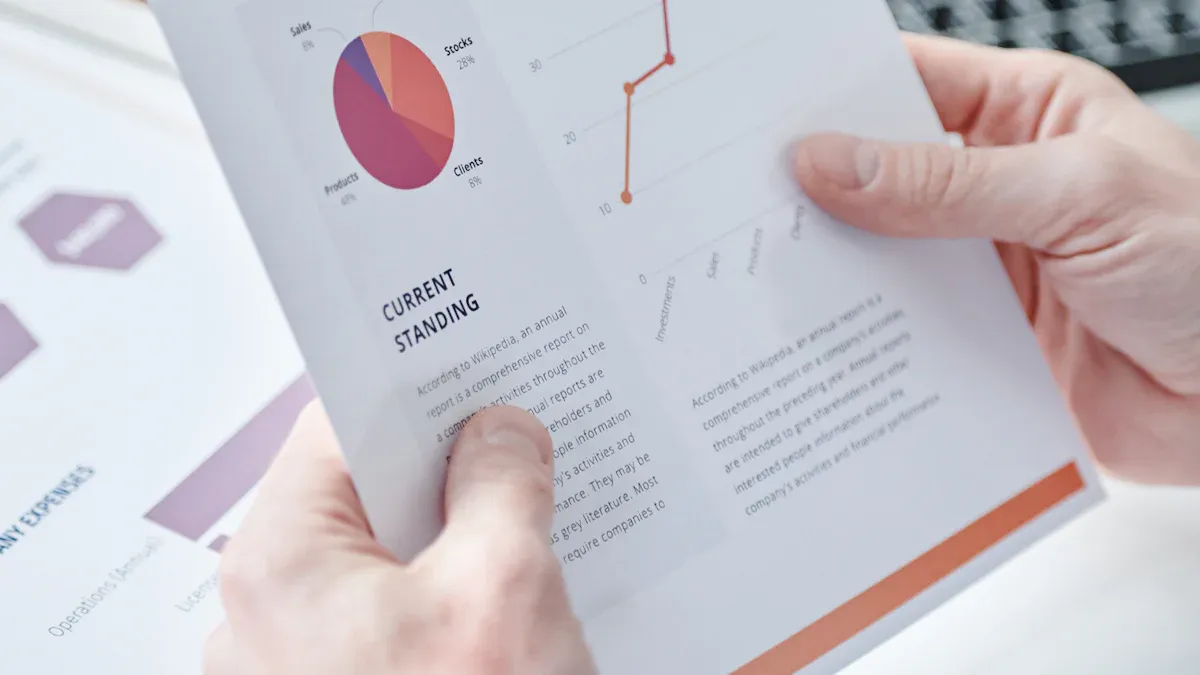
Top 10 Vendors Leading Modern Data Platforms in 2025
See the top 10 vendors shaping modern data platform solutions in 2025, with insights on innovation, scalability, integration, and enterprise adoption.
Lewis
Nov 27, 2025



